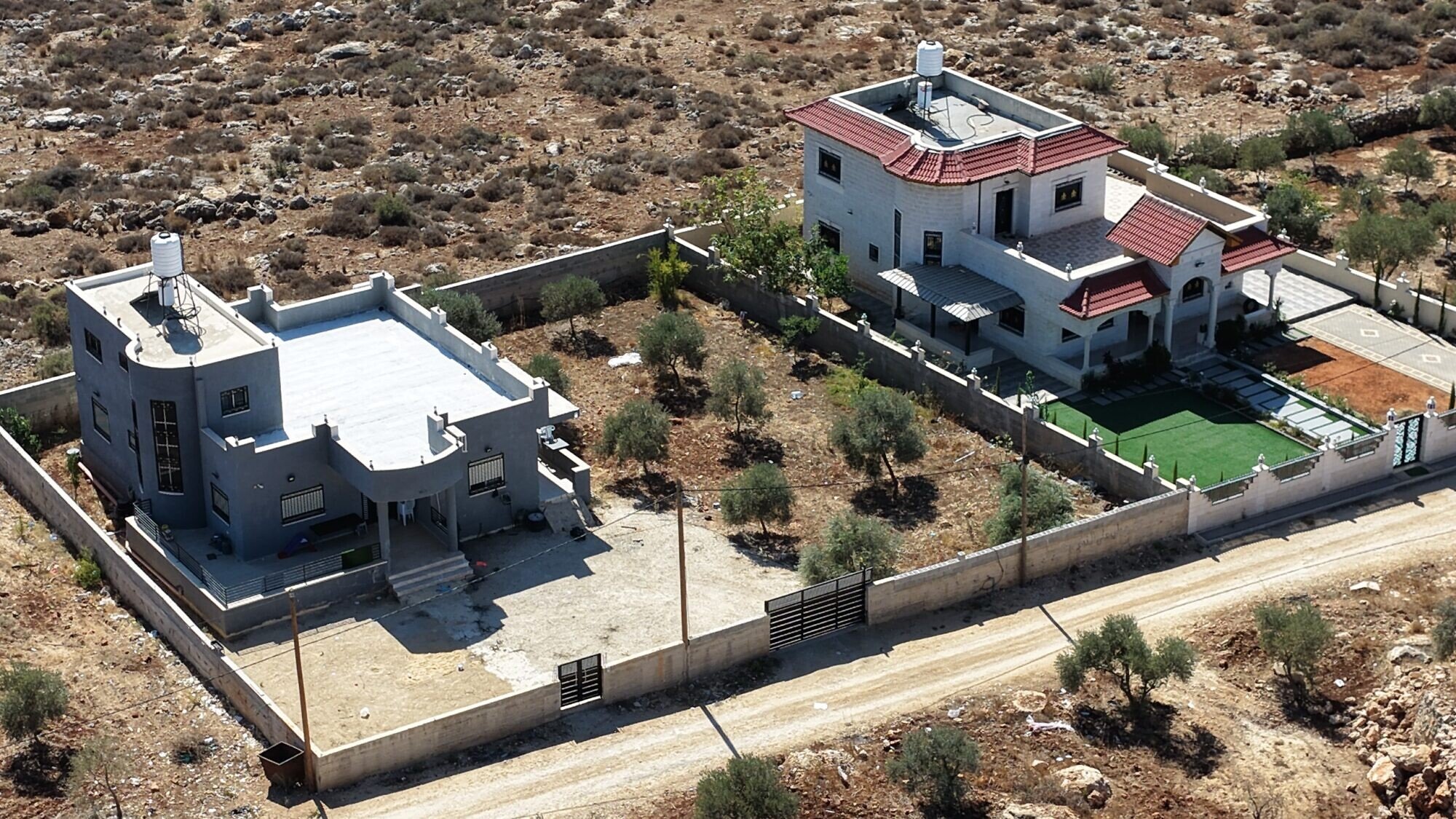by Judith Segaloff
Regavim's Naomi Linder Kahn shows JNS how illegal construction promoted by the Palestinian Authority raises urgent questions about Israeli enforcement.

At the Avichai Farm in Samaria, overlooking rolling green hills and grazing cattle, Naomi Linder Kahn, the international director of Regavim, an Israeli NGO dedicated to preserving and enforcing Israeli law and sovereignty across the country, leans over a large map spread across a wooden table on the porch. The view is idyllic; the reality she describes is anything but.
“When Regavim created this map, reflecting 2023 statistics, we tried to map out everything we found on the ground,” Kahn tells JNS during a Regavim tour of the area on Nov. 19. “Then we stepped back to discern patterns, policies, challenges, even threats—to understand what is actually happening, who is pulling the strings, and what direction they are pulling them in.”
That map revealed 103,000 illegal Arab structures across Judea and Samaria. According to Kahn, the data showed the Palestinian Authority “not only encouraged, but empowered and enabled illegal Arab construction.”
There is one piece of good news: since the outbreak of the war on Oct.7, 2023, the number of illegal buildings has not increased. “For the first time ever, enforcement has outpaced construction,” she says. “They knocked down more structures than they built.”
But that still leaves more than 103,000 illegal buildings standing—many of them placed strategically in buffer zones, firing ranges and open spaces to create territorial contiguity that extends Area A’s footprint deep into Area C and state-owned Israeli land.
A villa in the middle of an IDF firing zone
Nothing illustrates the problem more starkly than firing range 203 near Rosh Ha’Ayin. In the middle of an IDF live-fire zone, past olive groves and piles of burned trash, stands a lavish villa encircled by a decorative wall etched with Arabic inscriptions.
One soldier recalled knocking on the door and drinking coffee with the owner, a businessman from Dubai who built the villa as a summer escape. Today, the house appears locked and empty.
JNS asked the army whether firing range 203 is still an active training ground. The IDF acknowledged illegal construction in closed areas but did not address this specific site.
“Enforcement measures against illegal construction within closed military areas, with an emphasis on live-fire zones, are a high priority,” an IDF spokesperson said. The Civil Administration “has taken action…including the demolition of several sections of illegal construction,” but enforcement is carried out “in accordance with the operational situation assessment.”
Yet the evidence on the ground suggests the problem is far from contained. Alongside completed villas, multiple homes are mid-construction. A school building stands empty. A pristine soccer field shows no sign of children. And a sofa factory—apparently the only active facility—occasionally burns leftover fabric and chemicals, sending toxic smoke drifting over the Israeli city of Rosh HaAyin, only meters away.
Rewriting Oslo on the ground
Area C, designated by the Oslo Accords as the zone in the so-called “West Bank” under full Israeli civil and security control, is contiguous and strategically vital. By contrast, Areas A and B—under Palestinian or shared control—are fragmented. That fragmentation was intentional.
“The entire principle of the Oslo negotiations was to deny the Palestinian Authority continuity so that Israel would remain in control,” Kahn explains.
But the Palestinian Authority found a workaround. In 2009, then-P.A. Prime Minister Salam Fayyad launched the “Fayyad Plan,” a strategy to build a Palestinian state “from the ground up” through aggressive development and infrastructure, regardless of diplomatic progress. The goal was to create a “de facto state” and then leverage international pressure to secure recognition.
Kahn points to the results: paved roads, electrical infrastructure, and water lines—all running through firing zones and open territory in Area C, funded largely by European governments. “They are creating facts on the ground,” she says.
The stakes
For Israeli residents of communities like Rosh Ha’Ayin, the implications are not abstract. Illegal construction deep inside firing zones raises security concerns, environmental hazards, and the erosion of the very agreements meant to safeguard Israel’s control over Area C.
While the IDF insists that enforcement is underway and that security in the Seam Zone has been upgraded, the scope and visibility of illegal construction tell another story—one of a slow, steady reshaping of the terrain.
At Avichai Farm, as cows graze calmly in the distance, Kahn folds the map. The view may be peaceful, but the ground beneath it is shifting.
“It’s time for the government to recognize what is happening,” she says. “Because the other side certainly does.”
Judith Segaloff
Source: https://www.jns.org/in-area-c-arabs-are-building-schools-factories-and-villas/
No comments:
Post a Comment